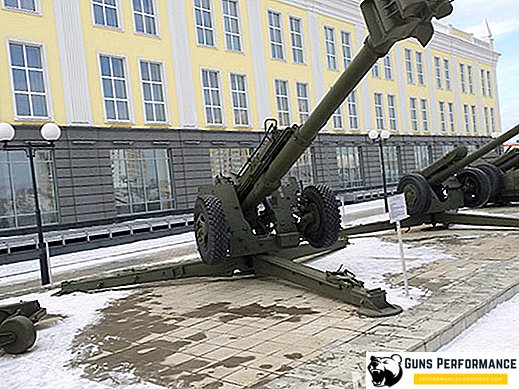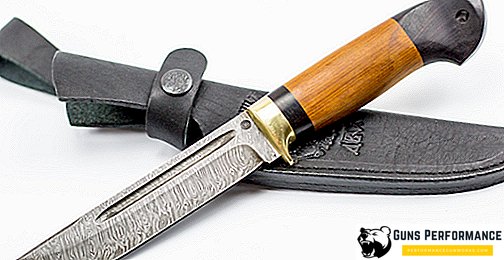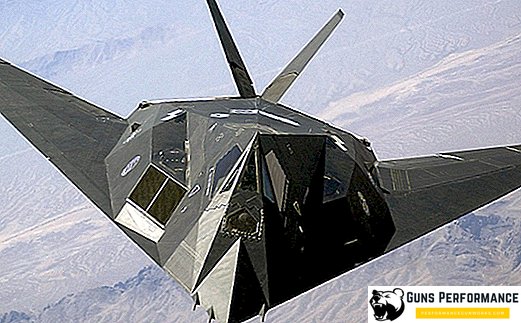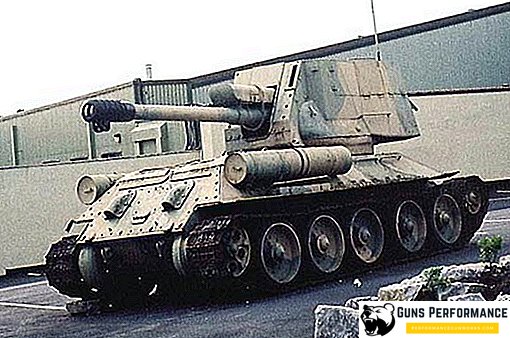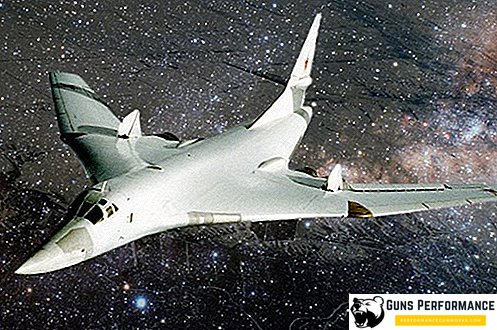
It seems that in the elite club of states capable of producing the latest fifth-generation fighter aircraft, replenishment: the other day, the Chinese presented to the general public their latest development - Chengdu J-20. The show took place during the Airshow China-2016 aerospace show, which was held in Zhuhai. A report on this matter states that China plans to overtake the United States as the largest player in the aviation market in the next decade and show its ambitions in strengthening the country's defense capability.
Works on the creation of this machine is engaged in the Chinese corporation Chengdu Aircraft Industry Corporation, they are underway for quite some time, the first flight of the J-20 was made in 2011. The Chinese plan to take this aircraft into service in 2018 or in 2018.
It should be recalled that at the present time the mass production of the latest fifth-generation fighter aircraft is established only in the USA. Americans are already operating the F-22 Raptor (first flight in 1990) and the F-35 Lightning (first flight in 2000). "Raptor" has even managed to withdraw from production.
Currently, development in this direction is being seriously engaged in several other countries of the world: in Russia, China and Japan. Work on the creation of the fifth generation fighter is being conducted in India, South Korea and Turkey.
In Russia, the new aircraft is called the PAK FA (a promising front-line aviation complex). It is being created by experts at the Sukhoi design bureau, aircraft are currently being tested, and small-scale production has begun. The first deliveries to the combat units are scheduled for 2018.
Actively working on the creation of new machines and China. In recent years, this country has made a truly impressive leap forward, and if earlier this country was mainly engaged in copying foreign weapons, today the PRC is fully capable of producing the highest-class equipment.
It is known about two fifth-generation fighter jets, which are being worked on by Chinese specialists: Shenyang J-31 and Chengdu J-20, which was shown at the air show on November 1.
J-31 is also at the testing stage, its first flight took place on October 31, 2012. Information about plans to adopt it yet.

Chengdu J-20
At the beginning of the last decade (2002), Chinese media reported on the start of the development of a fifth-generation fighter. In 2009, it was confirmed by official representatives of the Chinese Air Force. As early as next year, several Chinese publications reported that the gliders of the first two aircraft were ready.
The aircraft is developed by a group of designers, under the leadership of Young Wei, who had previously worked on the creation of FC-1 and J-10. It should be noted that Young Wei managed to get a higher education at the age of 19, and at 35 he became the chief designer of the aviation design bureau.
On January 11, 2011, the new aircraft, which later received the name Chengdu J-20, took off for the first time. At the beginning of 2012, he made 60 test flights. In the spring of the same year, the second prototype of the fighter joined the tests.
At present, it is known about nine prototypes (they differ somewhat from each other) and two pre-production machines manufactured under this project.

Tests and refinement of the new machine lasted more than four years, however, judging by the machine demonstration to the general public, this stage is already at the final stage.
Accurate information about the characteristics of the new Chinese fighter is very little, almost nothing is known about the composition of the onboard equipment or design features. Experts have to evaluate the new car, using only a few of its photos.
There is another interesting point. In the late 80s in the USSR began their own development of the fifth generation fighter, they were held in the Design Bureau. Mikoyan. The car received the designation MiG 1.44, it rose several times into the air, but in 2000 this project was closed. The fact is that the Chinese J-20 is very similar to the unrealized Soviet project MiG 1.44. Many experts believe that some of the developments obtained during this project, and the drawings were transferred to China.

Description Chengdu J-20
The Chengdu J-20 fighter is made using an aerodynamic "duck" with front horizontal tail (GIP), equipped with vertical two-tail plumage and ventral combs. The plane has a triangular wing with overflows and quite impressive dimensions: its length is 21-23 meters, and experts estimate the take-off weight of the fighter at 35-40 tons.
The flat sides of the J-20 fuselage have the same angle of inclination as the all-turning vertical stabilizers, and the front of the fuselage has sharp outlines characteristic of all fifth-generation invisible fighters. The aircraft’s crew consists of one person, the cockpit canopy is made according to a common besperepletnoy scheme, which improves visibility for the pilot and reduces the EPR machine.
The J-20 is equipped with two engines close to each other. There is information that while the Russian AL-31FN is being used on prototype aircraft, however, in the future the Chinese plan to install the J-20 WS-15, their own engine.
The aircraft’s landing gear has three supports, the front wheel is removed from turns forward, and the main pillars are in the side compartments (as on the F-22), which probably indicates the location of the internal weapons bays, similar to the American fighter.

There is information that the J-20 will be used a number of technical innovations, previously appeared on the fourth and fifth generation of Western and Russian fighters. The aircraft will use the EDSU system without any redundant mechanical or hydraulic systems.
All the electronics of the machine and its on-board equipment are planned to be combined into a single Ethernet network.
The degree of “invisibility” of the new aircraft is not completely clear, and the presence of a radar with an active phased array, which is one of the main features of the fifth generation fighter, also remains in question.
Project Evaluation
Despite the lack of complete information on the design and characteristics of the J-20, the first assessment of the aircraft can be done today.

The first impression that develops after a careful look at the J-20 is that this plane is supposedly assembled from different parts of the existing and future fifth-generation vehicles: the Russian MiG 1.44 and the American F-22 and F-35.
The aerodynamic layout of the vehicle is almost complete repetition of the unrealized MiG 1.44, and the dimensions of the aircraft are in many ways similar. However, there are significant differences. The Mikoyan machine had a larger wing, which reduced the specific load on it and increased the maneuverability of the Soviet fighter. The front of the Chinese fighter clearly copies the American F-22, and the shape of the air intakes is the F-35. The result was such a "flying Frankenstein" made of technical solutions belonging to different design schools, cars and generations.
Immediately it should be noted that the scheme with the front location of the tail is not a very good solution for stealth aircraft, and the ventral crest (as in MiG 1.44) is a real gift for any enemy radar.
There are questions to the aerodynamics of the J-20. The plane's landing gear is quite far from the high wing, which is probably done to increase the size of the weapon bay. This further reduces the maneuverability of the machine. Experts also raise questions about the inadequate size of air intakes, which will not allow the J-20 to reach significant speed at high altitudes.

However, even this is not the main problem of the J-20. It is not clear whether the Chinese managed to create a radar with an active phased array of a decent level. A few years ago, the PRC collaborated with Russia in this direction, but later the work was stopped. Naturally, it is not profitable for Russia to share with the PRC its own experience in this area. It should be noted once again that the installation of such a radar is one of the main features of the fifth generation fighter.
More questions about the engine of a new car. It causes great doubts that China was finally able to create a new generation engine WS-15, which is planned to be installed on a serial fighter. For several years in a row, the Chinese have bought loose blades and disks of turbines, pipes and top wheels for the AL-31F engine, and in quantities that clearly exceed repair needs. Probably, on the basis of these elements, as well as the previously obtained Russian engines in the Celestial Empire, they tried to build a new power plant. Now on the J-20 fighter are Russian AL-31FN, but the likelihood that Russia will sell China more powerful and modern engines is almost zero.
Analyzing the shape of the Chinese fighter, its engines and a relatively small wing, it is hard to believe that we have an airplane of winning air supremacy. The plane is also unlike a maneuverable light fighter capable of striking ground targets. The thrust of the J-20 is inferior to all existing fighters of the fifth generation and many cars of the fourth.
Probably, the J-20, the Chinese are trying to break in new technologies and come close to creating new-level machines. Despite the obvious shortcomings of this aircraft, it should be recognized that China has made a big step in the right direction. The country's leadership spares no resources; research is being conducted in many areas at once. China has not been purchasing heavy ground weapons for the needs of its army for quite some time, it may very well be that China will soon be able to fully meet the needs of its air force with the highest level aircraft. And maybe it will start to deliver them to other countries. In any case, the pace with which China’s aviation industry is developing is truly impressive.

5th generation specifications
Below are the estimated characteristics of the aircraft J-20.
| Modification | J-20 |
| Wingspan, m | 12.88 |
| Length m | 20.30 |
| Height, m | 4.45 |
| Wing area, m2 | 78.00 |
| Weight, kg | |
| empty aircraft | 19391 |
| normal takeoff | 32092 |
| Max. takeoff | 36288 |
| Engine | 2 TRDF WS-10G |
| Thrust, kgf | 2 x 14470 |
| Max. speed, km / h | 2600 (M = 2.00) |
| Practical range, km | 5500 |
| Practical ceiling, m | 20000 |
| Crew | 1 |


